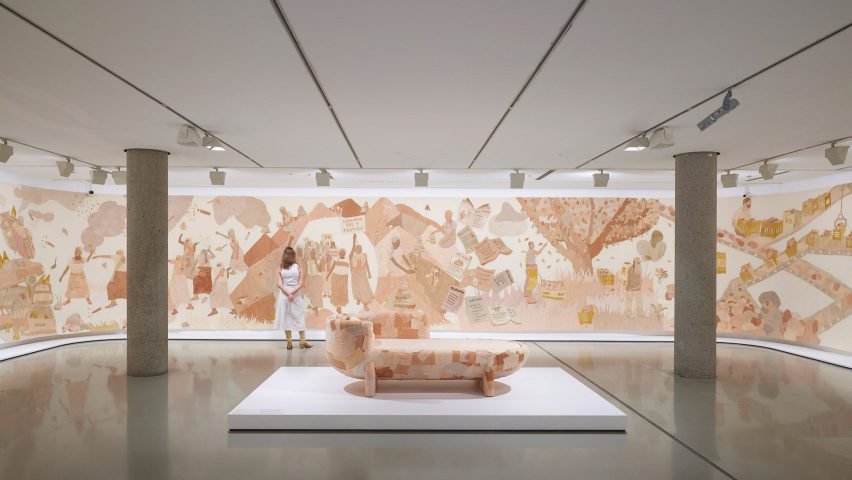
Fernando Laposse draws attention to impact of "conflict avocados" in Melbourne exhibition
Designer Fernando Laposse has created a 40-metre-long tapestry in avocado dye and a cabinet with avocado skin to raise awareness of the social and ecological impacts global avocado consumption has in Mexico.
Named Conflict Avocados, the pair of pieces are on display as part of the NGV Triennial at National Gallery of Victoria in Melbourne, Australia.
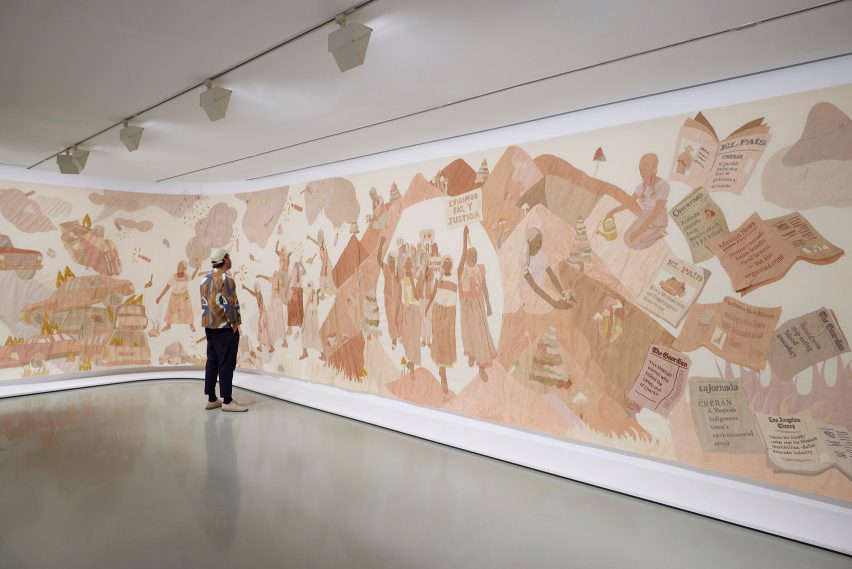
The handmade tapestry was made from fabrics dyed with avocado-seed pigment and marigold flowers.
It illustrates the entangled stories of the Monarch butterfly, the global avocado trade and the struggles of the people of Cheran, an indigenous community in Michoacan, Mexico, who were trying to prevent illegal loggers from clearing land for avocado plantations.
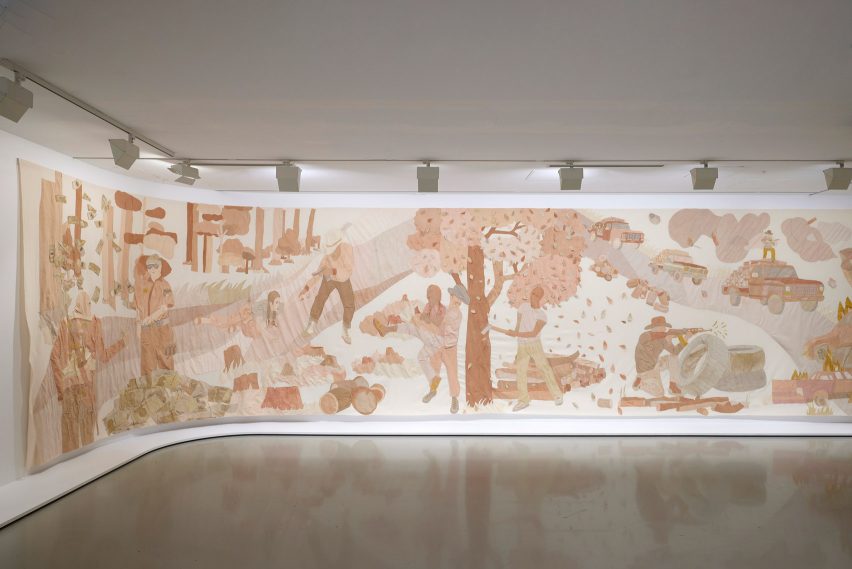
Laposse started the project as a way of drawing attention to the impact deforestation has on butterflies after speaking to a local environmentalist Homero Gómez González, who takes care of the Monarch Butterfly Sanctuary.
The project took a dramatic turn when González disappeared on 13th January 2020 – it is assumed that he was murdered. This motivated Laposse to focus on the human impact of the avocado trade, as well as its existing impact on nature, which eventually led him to Michoacan, where the majority of the world's avocados are grown and exported.
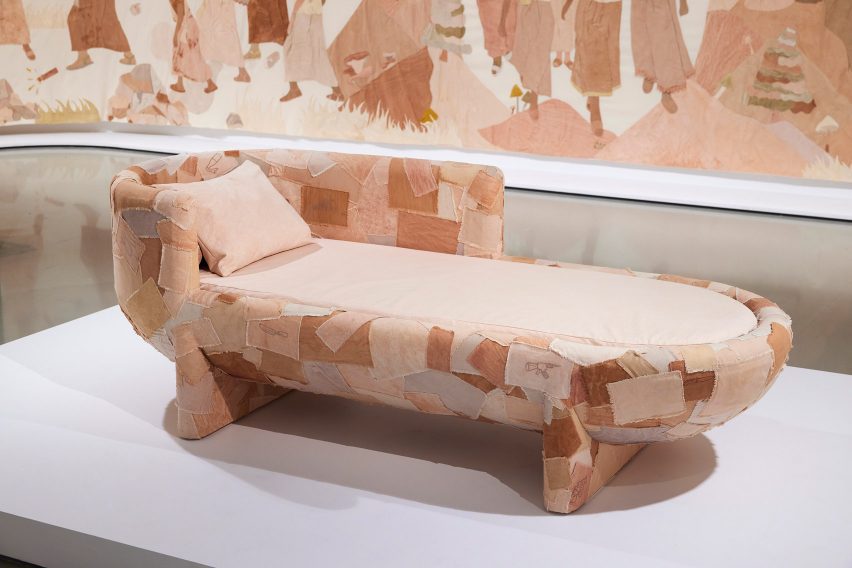
"Textile art has always been linked to protest art, they can be very strong in terms of communication," Laposse told Dezeen.
"All the colours in the tapestry are done by avocado dye, it's really important for me to encrust the material itself into the process. That's another super powerful thing about material design – that you can start to sink a curiosity that can be very superficial at the beginning, but once you have the curiosity and sense of wonder, you open people to be more receptive to the stories," he continued.
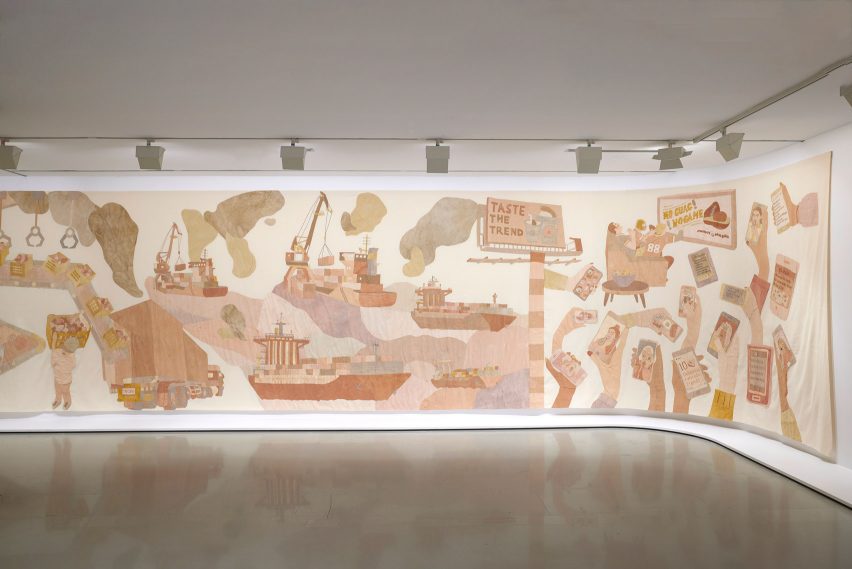
An illustration of consumers eating avocados at the end of the tapestry serves as a reminder of how the conflict around avocados is not an isolated problem in Mexico.
"I don't want this project to be perceived as this crazy thing happened in Mexico and it's a Mexico problem," said Laposse. "In fact, every bullet that is fired there, every chainsaw that cut down those trees is done with the money and consumers from abroad."
"No one was eating avocado 15 years ago, nowhere near the rate as we are eating today. It was actually an engineered and manufactured need by marketing, by social media," he added.
"At the end of the day, it's not about telling people never to touch avocado again. It's complicated because the avocado trade is also the main source of employment in Mexico, you can't just ban it totally. But we can start to ask these questions, do we really need to eat avocados all day every day, on the other side of the world, in the middle of the winter, what are the costs of that?"
At the centre of the exhibition is a daybed called "resting place", which was created as a homage to González. Trimmings from the tapestry were used to create the patchwork surface informed by Japanese Boro, a technique to repair broken textile by patching, and stitched with images of guns and chainsaws.
"My thinking behind this piece was to create a kind of Boro, a Mexican avocado Boro, that would perhaps be viewed as a possibility of repairing a broken system," said Laposse.
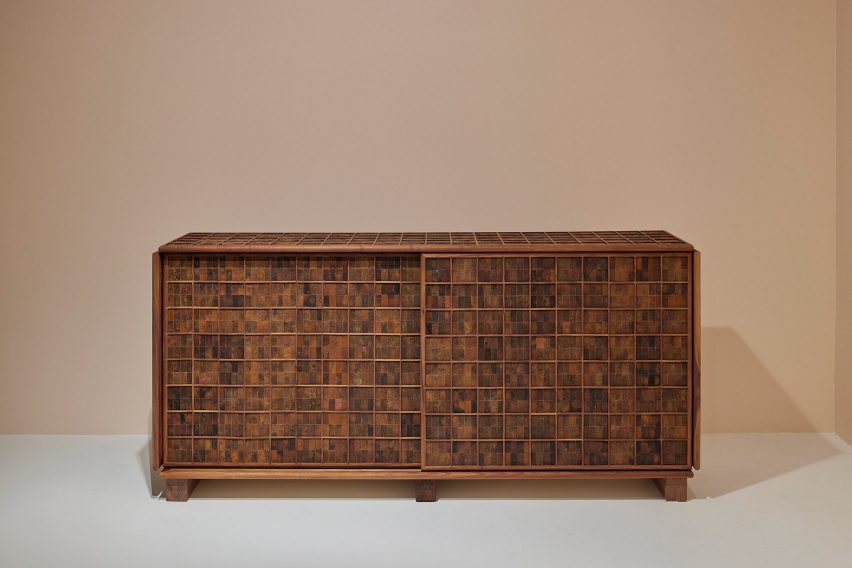
Laposse also turned waste avocado skins, collected from a guacamole vendor near his studio in Mexico City, into marquetry for a cabinet, with a texture somewhere between leather and wood.
According to Laposse, it took almost eight months to finish the piece, as he and his team developed a new technique to dry, stretch and flatten avocado skins and fashioned them into a repeated tile, with a fine walnut timber frame to protect the edges of each tile.
Laposse has consistently collaborated with local communities in his native Mexico to confront the challenges they face in a globalised world throughout his practice.
In 2018, he developed Totomoxtle, a marquetry material made from discarded corn husks, in collaboration with a community of indigenous farmers growing corn in Santo Domingo Tonahuixtla, Mexico.
In addition to being a renewable and natural material, Totomoxtle has the added benefit of re-popularising an endangered species of maize.
The photography is by Sean Fennessy.
Conflict Avocados is on show from 3 December 2023 to 7 April 2024 at National Gallery of Victoria in Melbourne, Australia. See Dezeen Events Guide for an up-to-date list of architecture and design events taking place around the world.